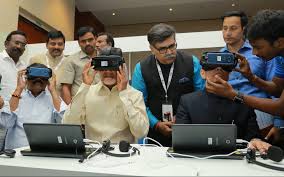VR and India
Introduction
Virtual reality (VR) is a technology that has the potential to revolutionize many industries, including gaming, education, healthcare, and retail. In recent years, VR has gained significant traction in India, with a growing number of companies and consumers adopting the technology. This blog post will explore the current state of VR in India and discuss its potential for future growth.
 VR and India: A Growing Market
VR and India: A Growing Market
Introduction
Virtual reality (VR) is a technology that has the potential to revolutionize many industries, including gaming, education, healthcare, and retail. In recent years, VR has gained significant traction in India, with a growing number of companies and consumers adopting the technology. This blog post will explore the current state of VR in India and discuss its potential for future growth.
VR and India
The Indian VR market is still in its early stages of development but is expected to grow rapidly in the coming years. Several factors are driving this growth, including:
- Increasing smartphone penetration: India has a vast population of smartphone users, providing a large potential market for VR experiences that can be accessed through mobile devices.
- Growing internet connectivity: As internet connectivity improves across India, more people are able to access VR content and applications.
- Rising disposable income: India's growing middle class has more disposable income to spend on entertainment and technology, including VR.
- Government support: The Indian government is actively promoting the adoption of VR and other emerging technologies, providing incentives and funding for startups and businesses in the sector.
The VR industry in India is witnessing a surge in adoption across various sectors. Here are some examples:
- Gaming: VR gaming is becoming increasingly popular in India, with several developers creating local-language VR games and experiences.
- Education: VR is being used in education to create immersive learning experiences, such as virtual field trips and simulations.
- Healthcare: VR is being used in healthcare to provide training for surgeons, treat phobias and anxiety, and help patients with rehabilitation.
- Retail: VR is being used by retailers to create virtual showrooms and provide immersive shopping experiences.
While the VR market in India is growing, it faces some challenges:
- High cost of VR headsets: The cost of VR headsets can be a barrier to entry for many consumers in India.
- Lack of awareness: Many people in India are still unaware of the benefits of VR and how it can be used in their daily lives.
- Limited content availability: The availability of high-quality VR content is still limited in India.
Despite these challenges, the future of VR in India looks bright. As the technology matures, the cost of VR headsets is likely to decrease, and the availability of VR content will increase. This will make VR more accessible to a wider audience and drive further growth in the market.
Summary
- The Indian VR market is still in its early stages but is growing rapidly.
- Factors driving growth include increasing smartphone penetration, growing internet connectivity, rising disposable income, and government support.
- VR is being adopted in various sectors, including gaming, education, healthcare, and retail.
- Challenges include the high cost of VR headsets, lack of awareness, and limited content availability.
- Despite these challenges, the future of VR in India looks bright.